Abstract
This study assessed the value of introducing the measurement of free phenytoin levels in a public hospital. After publicising the availability and purpose of the assay, free phenytoin levels were determined either (a) on the doctor's request or (b) when the total level was requested and the patient's record showed evidence of factors predisposing to an elevated unbound fraction. Total phenytoin was measured by EMIT, and the unbound fraction by ultrafiltration at 37 degrees C using [14C]-phenytoin as a tracer. During a 9 month period, 70 free level determinations were performed on 46 patients. These comprised 20% of all phenytoin assays. The median free phenytoin fraction was 13.6% (range 9.3-28.6%). While total phenytoin levels were below the normal optimum range in 61% cases, free levels were probably therapeutic or above in 70% cases. Dosage adjustments were recommended on the basis of the free level, and were followed more often when the doctor had requested the free level assay (P less than 0.05). The results suggest that a free phenytoin level assay can improve the usefulness of therapeutic drug monitoring, particularly when the doctor understands the purpose of the assay.
Full text
PDF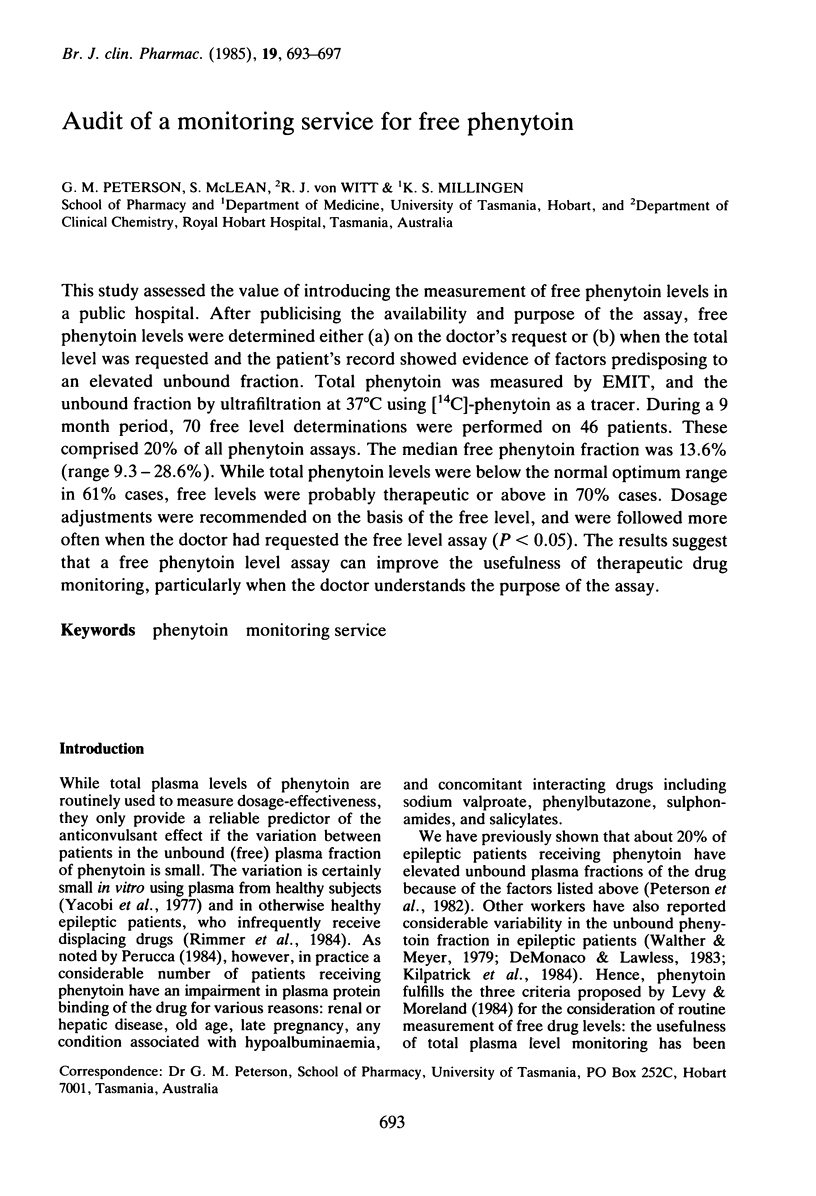
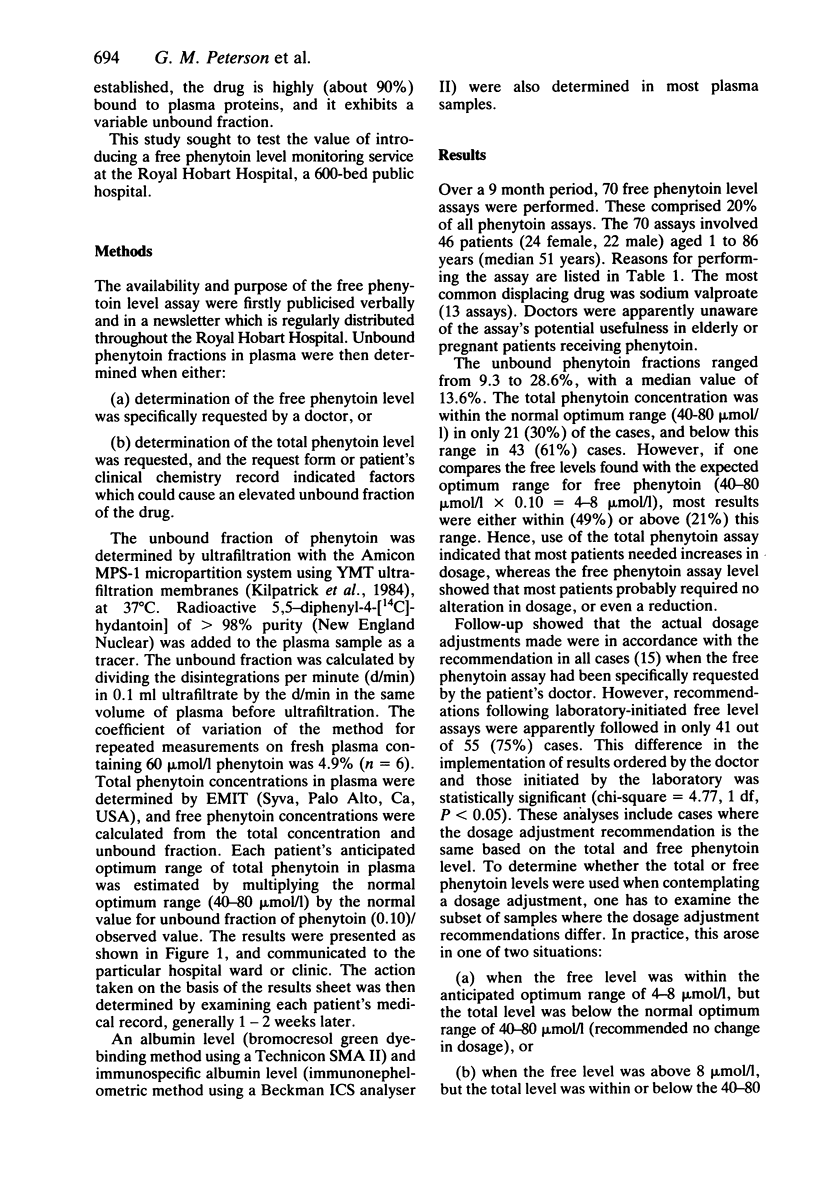
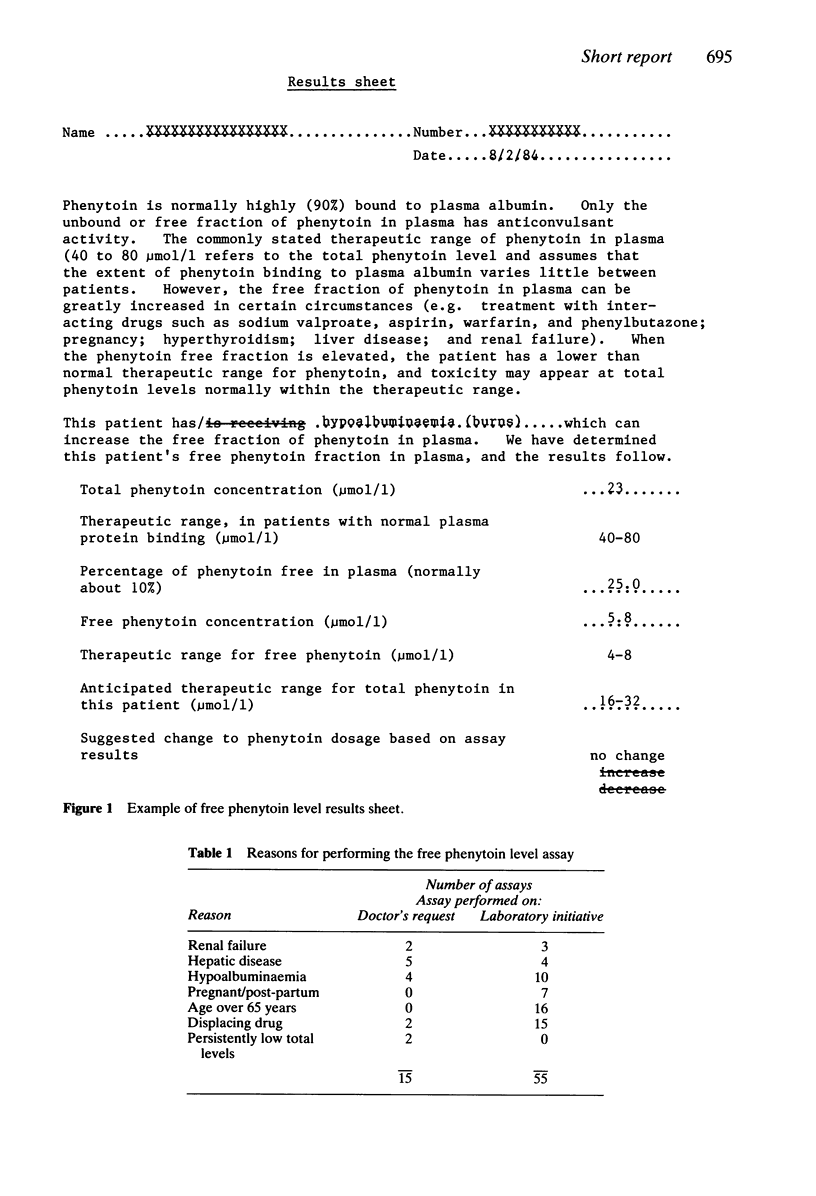
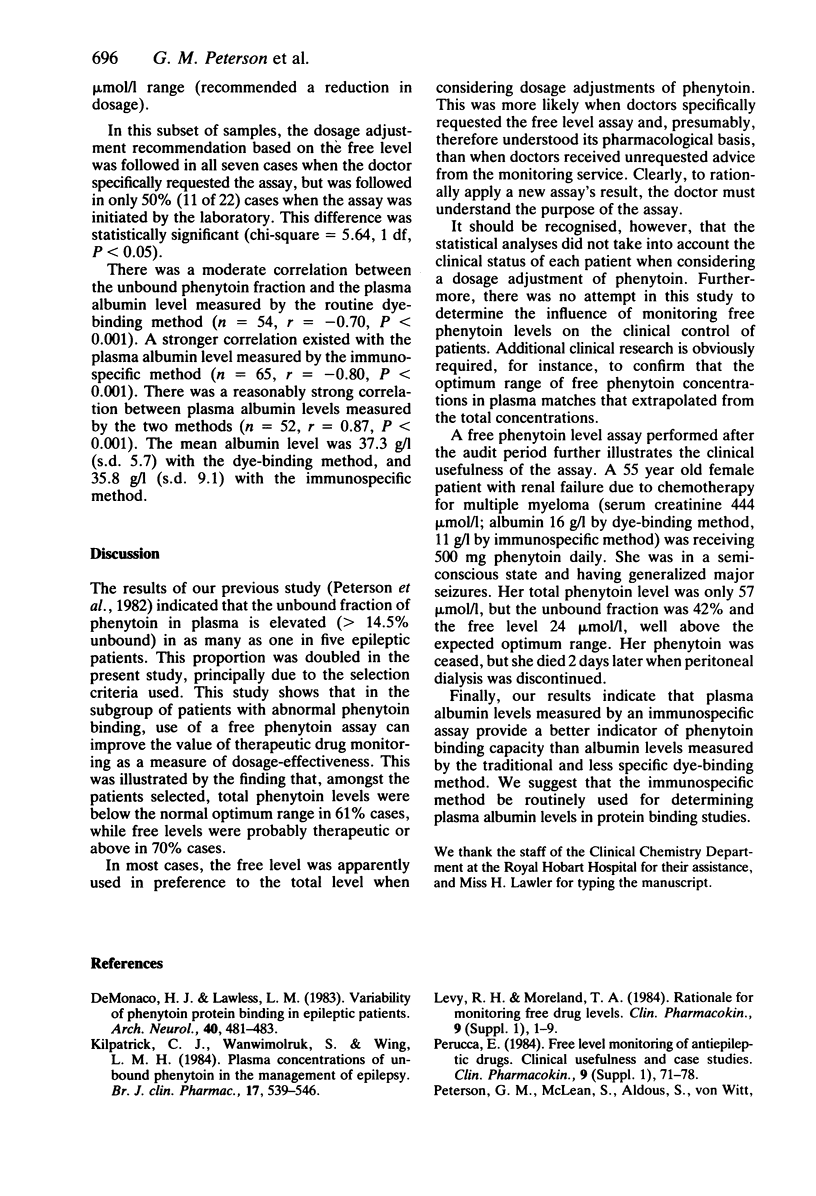
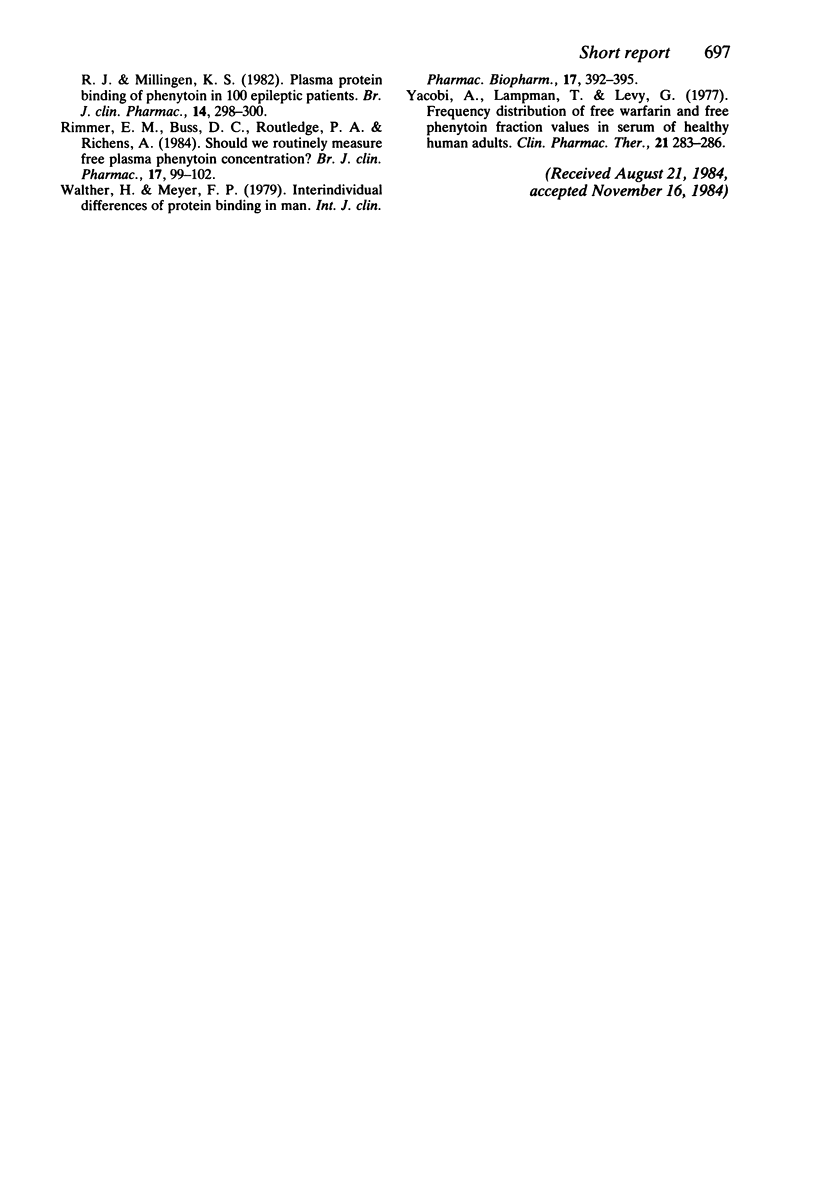
Selected References
These references are in PubMed. This may not be the complete list of references from this article.
- DeMonaco H. J., Lawless L. M. Variability of phenytoin protein binding in epileptic patients. Arch Neurol. 1983 Aug;40(8):481–483. doi: 10.1001/archneur.1983.04210070021007. [DOI] [PubMed] [Google Scholar]
- Kilpatrick C. J., Wanwimolruk S., Wing L. M. Plasma concentrations of unbound phenytoin in the management of epilepsy. Br J Clin Pharmacol. 1984 May;17(5):539–546. doi: 10.1111/j.1365-2125.1984.tb02387.x. [DOI] [PMC free article] [PubMed] [Google Scholar]
- Levy R. H., Moreland T. A. Rationale for monitoring free drug levels. Clin Pharmacokinet. 1984 Jan;9 (Suppl 1):1–9. doi: 10.2165/00003088-198400091-00001. [DOI] [PubMed] [Google Scholar]
- Perucca E. Free level monitoring of antiepileptic drugs. Clinical usefulness and case studies. Clin Pharmacokinet. 1984 Jan;9 (Suppl 1):71–78. doi: 10.2165/00003088-198400091-00009. [DOI] [PubMed] [Google Scholar]
- Peterson G. M., McLean S., Aldous S., Von Witt R. J., Millingen K. S. Plasma protein binding of phenytoin in 100 epileptic patients. Br J Clin Pharmacol. 1982 Aug;14(2):298–300. doi: 10.1111/j.1365-2125.1982.tb01981.x. [DOI] [PMC free article] [PubMed] [Google Scholar]
- Rimmer E. M., Buss D. C., Routledge P. A., Richens A. Should we routinely measure free plasma phenytoin concentration? Br J Clin Pharmacol. 1984 Jan;17(1):99–102. doi: 10.1111/j.1365-2125.1984.tb05007.x. [DOI] [PMC free article] [PubMed] [Google Scholar]
- Walther H., Meyer F. P. Interindividual differences of protein binding in man. Int J Clin Pharmacol Biopharm. 1979 Oct;17(10):392–395. [PubMed] [Google Scholar]
- Yacobi A., Lampman T., Levy G. Frequency distribution of free warfarin and free phenytoin fraction values in serum of healthy human adults. Clin Pharmacol Ther. 1977 Mar;21(3):283–286. doi: 10.1002/cpt1977213283. [DOI] [PubMed] [Google Scholar]


